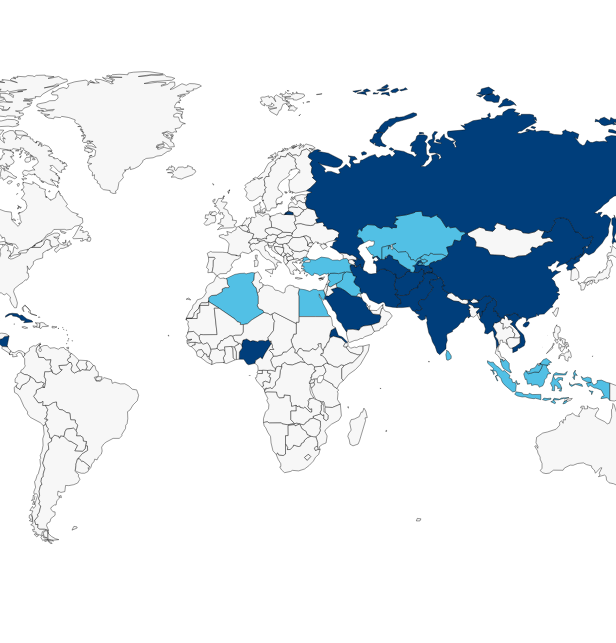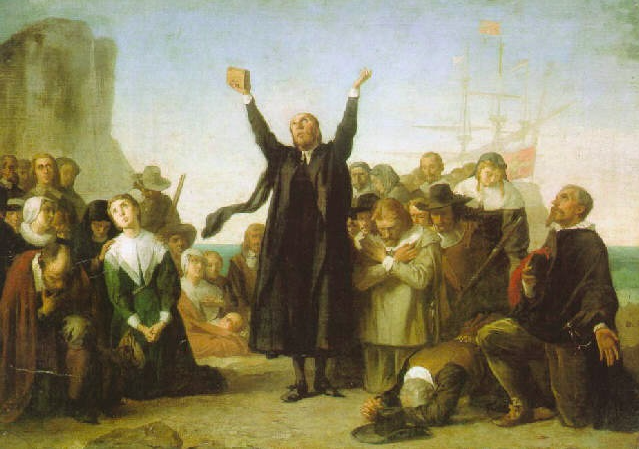Join us as we begin a series of posts focusing on the prioritization of religious freedom in American law and culture. This week our discussion focuses on religious freedom in the twentieth century up to the present and was being initiated with Ken Starr’s post “Shifting Applicability: A History of Judicial Approaches to Free Exercise.”
By: Robin Fretwell Wilson
Judge Starr’s review of the Supreme Court’s scant jurisprudence around the Free Exercise Clause of the First Amendment reminds us of the pivotal role that the Smith decision played in the creation of the Religious Freedom Restoration Act (“RFRA”), now before the United States Supreme Court in the Hobby Lobby and Conestoga Wood cases. The central issue there: Do companies employing hundreds or thousands of employees receive protection under the federal Constitution and RFRA when a federal mandate forces owners to violate their religious beliefs?
While the federal RFRA, and parallel laws in 19 states, require governments to show a compelling interest when burdening religious practice or belief, we should not forget that Congress and state legislatures imposed this restraint on government action at the invitation of the Smith Court. In his opinion for the Court, Justice Scalia emphasized that the “[v]alues that are protected against government interference through enshrinement in the Bill of Rights are not thereby banished from the political process”:
The fact that RFRA today blankets much of the country is a testament to the political process and its capacity to protect religious freedom.
Yet, today, many believe that for “defend[ers] of religious freedom[,] these have become dark times indeed.” They cite Hobby Lobby in particular and charge that Obama administration “deliberately … pick[ed] a fight with the Catholic Church by compelling both Catholic institutions and Catholic businessmen to cover abortifacients and contraceptives in the medical insurance they offer to their employees.” In the end, they fear “just how thin and equivocal the First Amendment might prove to be as a support for … religious freedom.”
It is understandable that some people of religious faith believe they are losing the fight—great societal change prompts considerable anxiety. The Affordable Care Act (“ACA”)—and the administration’s regulations requiring coverage of contraceptives and certain drugs that many believe end a life in being (“Mandate”) —are nothing if not far-reaching and unprecedented.
Yet, a more clear-eyed account reveals that people of religious convictions received significant, if imperfect, concessions after the ACA.
True, the administration made no concessions to the Hobby Lobbys of the world, that is the for-profit companies, whether exempt from the Mandate, in addition to churches, only faith-based organizations that primarily employ and serve like-minded believers and that seek to inculcate their values—an exemption mocked on the basis that “not even Jesus and the apostles would have qualified.” Taking that criticism about narrowness on board, the administration simplified the test for an exemption so that all non-profit organizations recognized by the IRS as faith-based would qualify, just as churches do.
More importantly, the administration extended significant concessions to those exempted, namely churches and religiously-affiliated social service agencies, universities, and other non-profits. To see this, consider the University of Notre Dame, which filed suit over the Mandate early on. Notre Dame employed 17,037 people in 2010 according to the Form 990 that it files as a non-profit. Over 5,200 of those employees were full-time in 2012 according to Notre Dame’s 2013 complaint. Before the concessions, if all 17,000+ employees were full-time, Notre Dame would have faced an annual penalty of nearly $34 million if it dropped its coverage rather than comply with the Mandate. After the administration’s concessions, Notre Dame no longer faces any penalty. It simply does not have to provide the contested coverage. Instead, an insurer in the marketplace will provide the contested coverage—at no cost to Notre Dame’s employees and at no cost to Notre Dame.
For exempted objectors that purchase group health plans in the market (Notre Dame does not; given Notre Dame’s size, it self-insures for that risk), the insurer that sells the underlying policy will provide the contested coverage for “free” to Notre Dame’s employees—and eat that cost. The administration contends that the insurer is made whole for providing the “free” coverage by the savings it reaps from “lower costs…and fewer unplanned pregnancies” in the underlying pool.
For exempted objectors that self-insure, as Notre Dame does, the plan’s third-party administrator (“TPA”) will be required to locate an insurer running a federally facilitated exchange (“FFE”), and that insurer must then provide the contested coverage to Notre Dame employees without cost. The FFE insurer reimburses itself for the “free” coverage from dollars it would otherwise owe the federal government for running the exchange.
These concessions are real. Before the concessions, religious objectors like Notre Dame said that the Administration should give them a pass because to do otherwise would force them to “subsidize, facilitate, and/or sponsor coverage for abortifacients, sterilization services, contraceptives and related counseling services, which are inconsistent with the teaching of the Catholic Church” (emphasis mine). After the concessions, the grounds for religious objection shifted. Notre Dame now contends that “[n]otwithstanding the so-called ‘accommoda
tion,’ Notre Dame is still financially penalized or required to pay for, facilitate access to, and/or become entangled in the provisions of the objectionable products and services in violation of it sincerely held religious beliefs” (emphasis mine). Another group of litigants, the Little Sisters of the Poor, whose class action suit is still working its way through the courts, flatly says it cannot use the proffered accommodation: executing and delivering the government’s prescribed form, Form 700, to their TPA would cause them to “deputize a third party to sin on their behalf.” As the newer objections make clear, those who continue to object worry not only about complicity, but how to maintain a distinctively religious character in a world of increasing government regulation.
While the concessions have not mollified all, they have proved valuable to some. Before the concessions, the Catholic Health Association, an early supporter of health reform, called the administration to task for promising a “respect for appropriate religious freedom” and not delivering. After, they lauded the “White House [for] a resolution … that protects the religious liberty and conscience rights of Catholic institutions.”
The jury is still out as to the residual objections. For the moment, the Supreme Court has enjoined the administration from making objectors “use the form prescribed by the Government [or] send copies to third-party administrators.” It will remain to be seen at a trial on the merits whether these post-concession religious objections carry the day.
Viewing the Mandate from the 60,000-foot level, the religious liberty glass is half full, half empty. While the Mandate precipitated lawsuits from 48 for-profit companies that collectively employ at least 19,500 full-time employees (as determined by the number of employees included in complaints compiled at HHS Mandate Information Central , a website maintained by the Becket Fund, lead counsel for a number of litigants), the Administration’s concessions would insulate the 49 religiously affiliated non-profits that filed suit, like Notre Dame University, from having to directly pay for the objected-to drugs. And the non-profit litigants collectively employ far more people—at least 58,000 full-time employees, according to their complaints.
Although some people of religious faith see much to lament, the situation is far from hopeless. We should remember the political process largely succeeded to remove the most direct involvement where the federal RFRA may or may not. While there is a lot to do to secure religious freedom in a range of domains, important tools remain: political dialogue and political compromise. We should not lose sight of these tools in the struggle to balance religious liberty with other mandates in a plural society.
Robin Wilson is Professor of Law and Law Alumni Faculty Fellow at Washington and Lee University School of Law.
This piece was originally authored on June 2, 2014 for the Religious Freedom Project at Georgetown’s Berkley Center for Religion, Peace, and World Affairs.
THE RFI BLOG

Myths of Religious Nationalism in America and Abroad

France’s Olympic Hijab Ban Violates International Law And Exacerbates Tensions

RFI Briefs USCIRF on Lessons from 25 Years of U.S. Designating Religious Freedom Violators

Thought Police: Protecting the People from Prayer

A Religious “Delaware”: Establishing a State Haven for Religious Corporations
CORNERSTONE FORUM

Challenges to Religious Freedom in Iraq and the Critical Need for Action

Public Bioethics & the Failure of Expressive Individualism

Religious Liberty in American Higher Education

Scotland’s Kate Forbes and the March of Secularism


